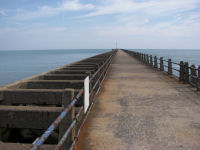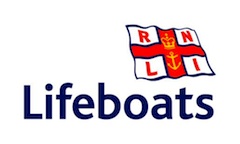Newhaven East Arm
For larger version of the map, please Click Here
Printer friendly version of this page – No images
Directions from the west (Red line on map): On entering Newhaven from the direction of Brighton and Peacehaven, follow the A259 round the one way system, past Denton Island, and over the swing bridge. Take the next left prior to the flyover, bear right and follow the road under the flyover then turn left at the end. Driver across the level crossing and take the immediate right into Railway Road.
Stay on this road – it goes from Railway Road and becomes Clifton Road before becoming Beach Road. Park in the small layby on the right hand side of the road just before the water treatment works.
Directions from the East (Purple line on map): On entering Newhaven from direction of Seaford, take the first exit off the large roundabout by Sainsbury’s and stay in the left hand lane. Take the second exit off the next roundabout by McDonald’s. Straight on at the mini roundabout and then left into Railway road.
Once parked as above, on your right will see a break in the hedge, follow the path through and across the foot bridge over the rail tracks. Follow the path and over a small footbridge over the creek.
This path will carry on for quite a distance around the industrial estate and will come out onto the beach area. You will see the arm to your right, follow the path to access.
Total walk distance = approx 0.6 mile from car park to start of arm. (Orange line on map).
Although it can be a bit of a slog (especially if you insist on carrying too much gear), Newhaven East arm is a fantastic venue, offering easy fishing and a good variety of species. It’s also a reasonably sheltered spot in the prevailing South Westerly winds on account of the larger Western breakwater acting like a wind break, this makes it ideal when other venues are out due to wind.
Being at the mouth of the river Ouse, it gives the option of fishing the inside into the river itself or the outside onto the sandy bottom of the Tidemills area of Seaford Bay.
The inside during the Summer will see you catching eels, Pout, flounders, bass and Mullet while the winter will produce mainly whiting and flounders. Recommended methods here include 2/3 hook flapper or running ledger baited with the the usual bottom baits of ragworm, lugworm and Crab. The tidal flow can be strong here, so be prepared to up the amount of lead used. Crabs will also be a problem, so expect to do frequent bait changes. Please be aware of craft using the river especially the bigger ferries!
 The better option at this venue is to fish into the bay either from the outside or off the end. A word of warning here – the outside of the arm is ‘hollow’ with only the concrete framework protruding out with no decking to speak of. This is separated from the main walkway by a metal railing. I would not advise climbing over and fishing the outside in wet weather as the possibility of slipping off and dropping into the oggin is quite high.
The better option at this venue is to fish into the bay either from the outside or off the end. A word of warning here – the outside of the arm is ‘hollow’ with only the concrete framework protruding out with no decking to speak of. This is separated from the main walkway by a metal railing. I would not advise climbing over and fishing the outside in wet weather as the possibility of slipping off and dropping into the oggin is quite high.
In the Summer, the species here include: bass, flounder, plaice, sole, pollack, Pout, mackerel, garfish, scad, Shad, Mullet (Greys and Golden Greys) and if you’re unlucky, the Weaver.
Float fished mackerel strip will take most of the free swimming species, while bottom fished worm will take the flatfish as well as bass and Mullet. Bottom fishing methods include, flappers and ledgers either in single hook mode or multi, baited with lugworm or ragworm. While these methods will catch you the round fish and the more predatory flatfish such as the plaice and flounder, if you are after sole, you need to have the bait firmly ‘pinned’ to the sea bed, so adapt your method and avoid long flowing traces that allow the bait to waft about in the current. Keep the traces short and consider using extra lead such as shot on the traces themselves or a specially made sole rig.
A killer method for bass is to livebait a small Pout down the side of the structure but be prepared that any hooked bass is going to immediately seek to get in amongst the concrete pilings, so decent rod with some backbone, decent quality line and nerves of steel are required.
When after Mullet, they will also seek sanctuary of structure when hooked, so be ready and have plenty of plenty of swearing practice beforehand. Groundbaiting the area first is a good idea and bread or small small pieces of mackerel flesh are good baits for the Thick lipped Mullet. If you want the Golden Greys, then small bunches of Harbour ragworm (aka ‘Maddies’) fished on the bottom is a good method but fish the inshore end near the beach.
Winter time will produce whiting by the bucketfull as well as Pout and the annual plague of rockling early in the year. Again, bottom fished lugworm baits work best and tipping off with slivers of squid often entices the better fish.



